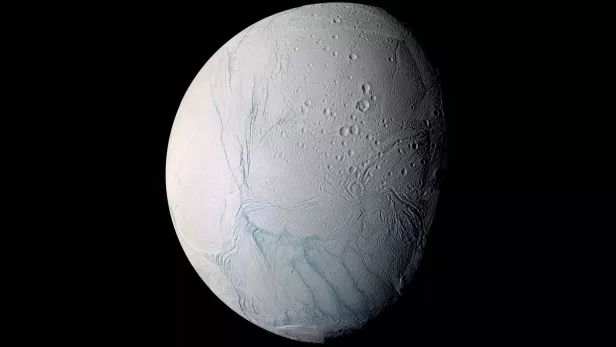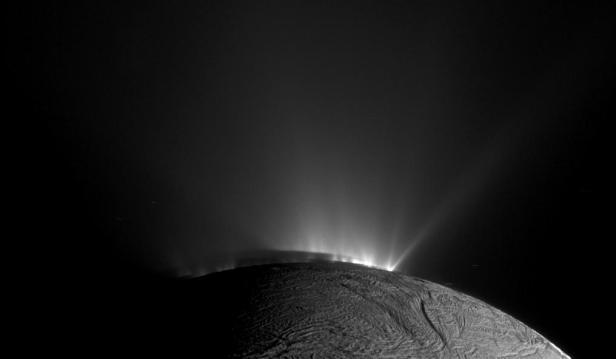
© NASA/JPL/Space Science Institute
the NASA Can on Saturn’s moon Enceladus Proof of the building block in life. they found Hydrocyanic acidIt is a crucial molecule for the evolution of life.
There’s one on Enceladus Thin and volatile water vapor atmosphere As well as huge clouds steam And ice. It was already known that there was Water, carbon dioxide, methane, ammonia And hydrogen It can be found. with Hydrogen cyanide (HCN, hydrogen cyanide), ethene (CH2H2), Propylene (C3H6) as well Ethan (C2H6), more building blocks of life have now been proven.
A source of chemical energy
This was found in an eruption. Therefore, researchers suspect that the source of energy for this lies in one of the oceans located under the sea’s surface Heavy ice cover Enceladus is suspected. According to researchers, there are likely more out there Chemical energy than was previously assumed.
Water is forced out through cracks in the surface
© NASA/JPL-Caltech/Space Science Institute
“The more energy available, the more likely this is to happen Increase and sustain life Researchers say In the current situation. Molecules are said to be important building blocks of metabolic reactions.
Hydrocyanic acid is the starting point for the origin of life
The discovery of hydrogen cyanide in particular was crucial. “It’s the starting point for most theories about the origin of life,” he says. Jonah Peter from Jet Propulsion Laboratory NASA. Hydrocyanic acid is used to form Amino acid Necessary, a basic building block of life. The study authors describe hydrogen cyanide as “The Swiss army knife of amino acid precursors“.
Cassini image of Enceladus in front of Saturn, with the moon Mimas in the background
© NASA/JPL/Space Science Institute
The so-called has already been proven Methane formationOne Metabolism Where methane gas is produced. Additional ones have now been discovered energy resources However, there are many more more powerful And More versatile As methane generation. The researchers compare the methane generation process to a watch battery and their new results to a single battery car batteryWhich can provide energy for life.
Cassini data continues to provide important insights
The data for their research comes from Cassini probe. Their mission is already over 2017But mission statements continue to provide new insights. The study appeared In the journal Nature Astronomy. It has not been clarified whether there are actually living organisms on Enceladus.

“Total coffee aficionado. Travel buff. Music ninja. Bacon nerd. Beeraholic.”










More Stories
Coral Seeding: Artificial Insemination Makes Coral More Heat Tolerant
Fear, Anger, and Denial: How People Respond to Climate Change – Research
LKH Graz: Using radiation to combat heart arrhythmias